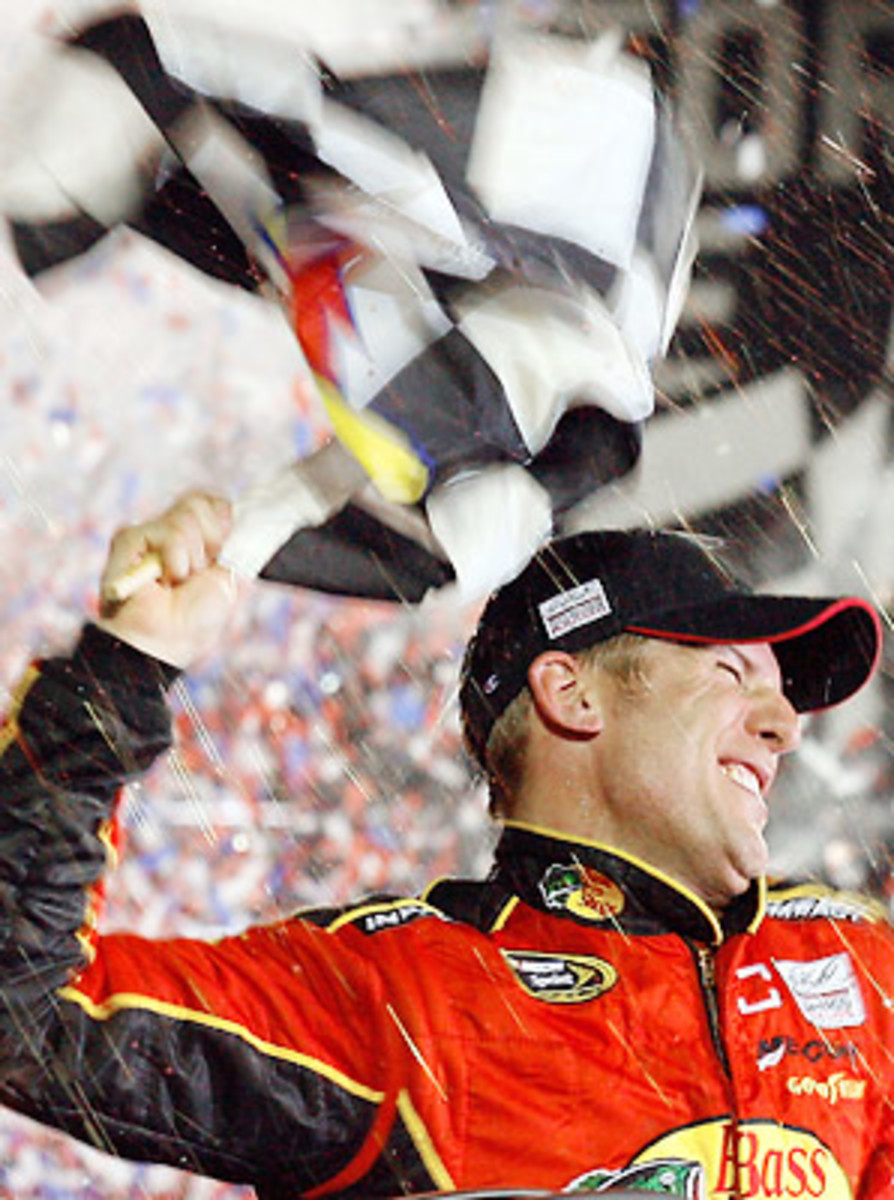
Will Daytona 500 champion Jamie McMurray be a one-hit wonder?
You know what happened on Sunday in the Great America Race. McMurray, after struggling mid-pack for most of the event, suddenly surged to the lead with two laps left -- his first lead of the day. He then held off a hard-charging Dale Earnhardt Jr. to win his first Daytona 500. He cried in his car. Cried in Victory Lane. And cried in the media center. Clearly, this was a monumental night in the life and times of the clear-spoken, God-fearing native of Joplin, Mo.
But does it auger success for McMurray for the rest of the 2010 season? In a word: no. The last two Daytona 500 winners -- Ryan Newman in '08 and Matt Kenseth in '09 -- didn't even make the Chase. Newman, in fact, hasn't reached Victory Lane since he took the checkers at Daytona and Kenseth's only win since hoisting the 500 trophy came the following week in Fontana, Calif.
That leads us to this point: Daytona and Talladega -- the two-restrictor plate tracks on the circuit -- produce more fluke winners than any other venues. Restrictor plates, after all, reduce the speeds in the cars and force the drivers to run in large packs. This levels the playing field between the have and have-not teams and allows someone like McMurray, who's never qualified for the Chase and before Sunday had only three career wins in 258 starts, to seemingly come out of nowhere and win the most important stock car race of the season.
But McMurray could very well buck this trend of 500 winners fading into the back of the pack as the season progresses. Why? Three reasons.
1. He's on an up-and-coming team. You could make the argument that Earnhardt-Ganassi Racing was as hot as any team in the sport not named Hendrick Motorsports during last year's Chase. EGR's Juan Pablo Montoya, who drove four brand new cars in the Chase, ripped off four straight top-five finishes to start the 10-race playoff and held the points lead for the first three weeks after finishing the regular season 11th in the standings. He eventually fell back and finished eighth in points, but his performance in the Chase sent a very loud statement through the garage. EGR, though only a two-car team, was on the rise.
2. He has as much horsepower under the hood as any other driver in the sport. The engine alliance between EGR and Richard Childress Racing that was formed last season has been an overwhelming success story. The EGR cars can match any in NASCAR -- the Chevys of Hendrick Motorsports included -- in pure straight-line speed.
3. He's hungry. Never underestimate what the threat of unemployment can do to a driver. McMurray knows better than anyone what happens when a driver's talent -- of which McMurray has plenty -- doesn't match his results. On Sunday McMurray was as aggressive on the track as I've seen him in two years. Who knows? Maybe getting released by Roush-Fenway will prove to be the best thing that ever happened in his career. It sure looks that way after one race with EGR.
On Sunday in Fontana we'll have a better understanding of what McMurray will be capable of this season. Fontana, unlike Daytona, doesn't produce fluke winners. My hunch is this: McMurray, two months from now, will have proven to everyone in the garage -- and there are plenty of McMurray skeptics within the sport -- that he's no one-race wonder.




